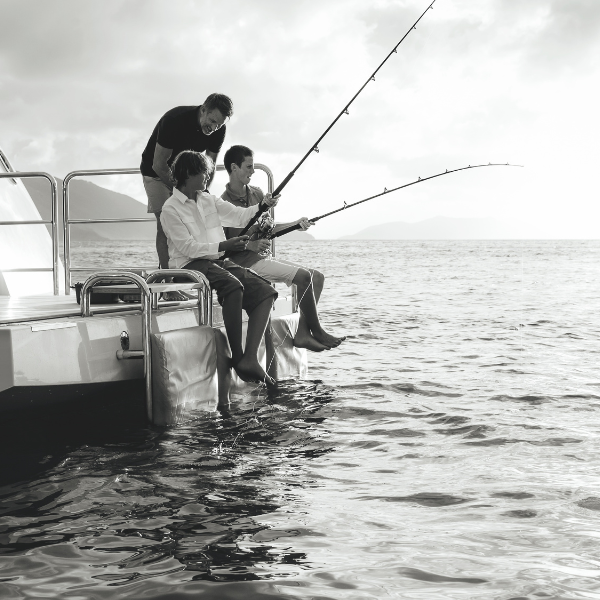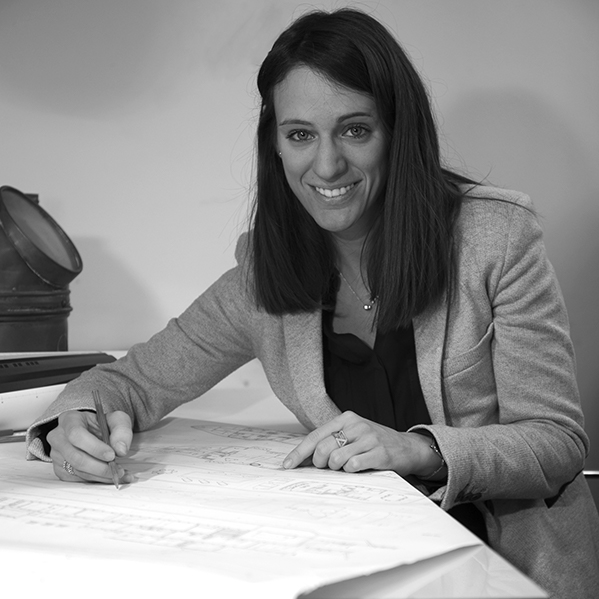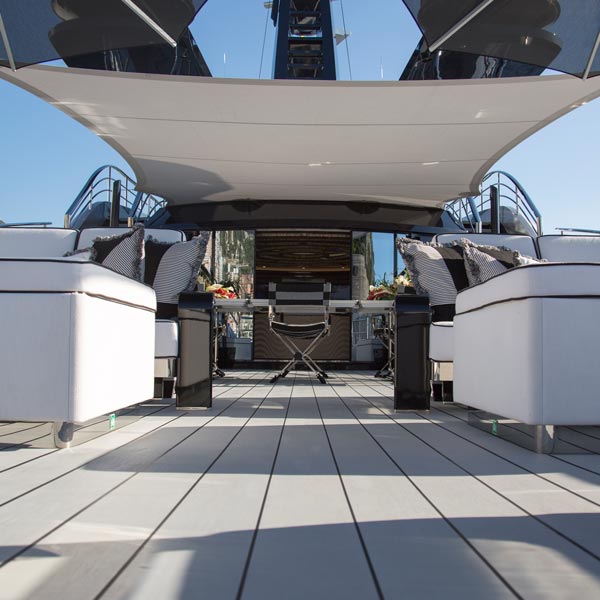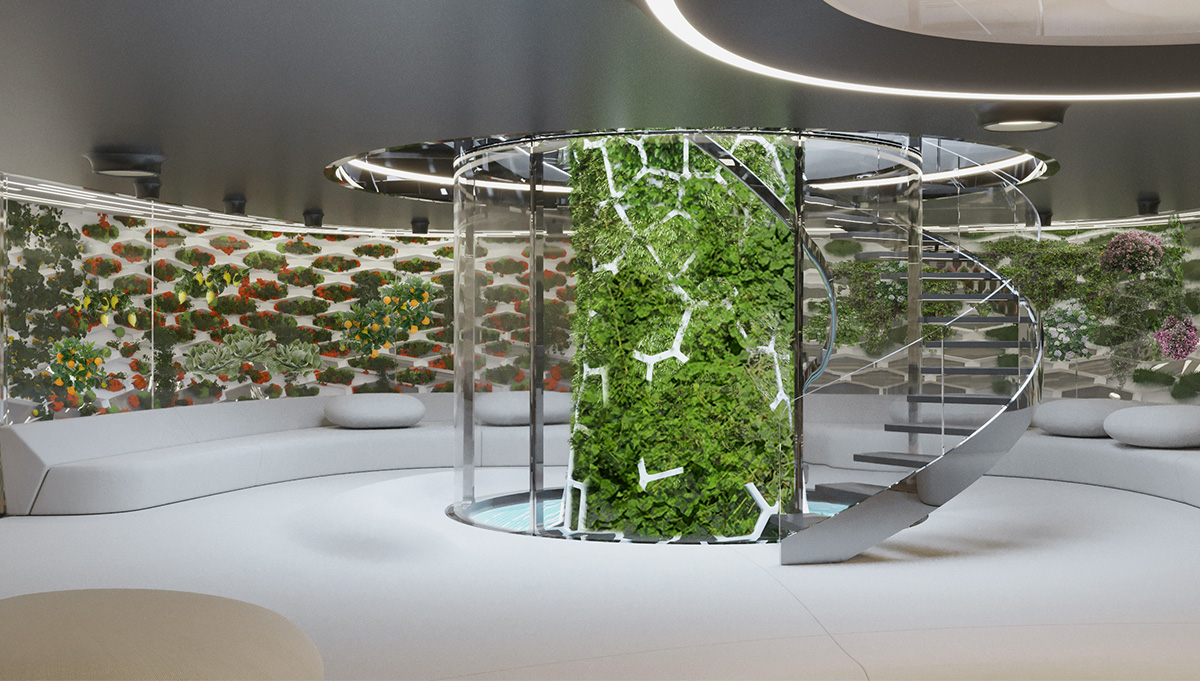
Interior of Pegasus

Interior of Pegasus
Greening superyachts
From wild to weird to wonderful, superyacht concepts allow designers from many disciplines to inject new ideas into traditional architecture and, as one recent proposal demonstrates, sometimes it can inspire a new way of living on board.
It is said that necessity is the mother of invention, but sometimes the freedom to explore ideas and indulge creativity can achieve similar results. The superyacht industry is a prime example, where the scale and scope of the end vessel invites novel ideas in design and technology. It’s true that the need to swivel away from fossil fuels – a global issue that affects global industries – is a necessity that is driving the invention and application of more sustainable energy and propulsion systems in superyachts, but there’s more to the idea of a yacht that just its method of movement. There’s a whole lifestyle and approach to living that can be encapsulated in its hull and decks.
It’s a facet that is attracting designers and thought-leaders from a wide gamut of industries, from big-name land-based architects like Lord Norman Foster and Zaha Hadid to industrial designers like Philippe Starck and Jozeph Forakis. Yacht concepts now are beginning to transcend the mundane, the simple purpose of any vessel that floats, and explore avenues of invention that include new propulsion systems but go far beyond them. They are increasingly focused not only on the wellness of the oceans on which they cruise, but the wellness of the people on board. It’s about promoting a better way of living for a better way of life.
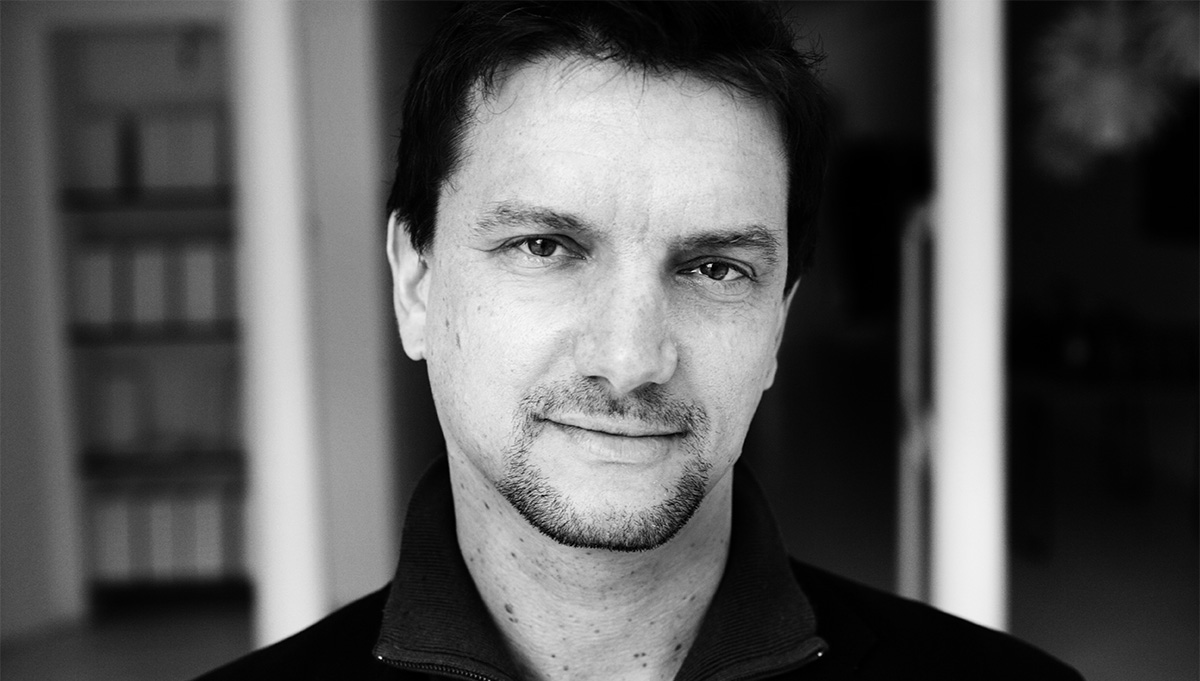
Jozeph Forakis

Jozeph Forakis
For Forakis, a relative novice in the field of yacht design, the freedom to freewheel has led to an 88-metre concept which he calls Pegasus. It features a proposed 3-D printed skeleton, and an onboard hydrogen production system that essentially uses renewable solar energy to create hydrogen from seawater and thereby feed fuel cells for emission-free yachting. There’s also a glass superstructure shell and a silvery hull finish to help the yacht blend into her environment like a chameleon – an idea that struck as Forakis conceived the yacht on a beach on the Greek island of Koufonissi. “I was inspired to create a yacht as close to the sea and nature as possible, made of clouds, floating above the waterline,” Forakis says. “I wanted to honour nature by blending into it, becoming virtually invisible, both in design and in her environmental impact.”
The design incorporates a vertical hydroponics column, which Forakis calls the Tree of Life, rising four decks through the centre of the yacht, including a Zen garden with reflecting pool at the bottom for mindfulness and meditation. The stack serves multiple purposes – it acts as an all-natural air purification system and oxygenator, and it is conceived to offer an opportunity to grow organic produce in situ – the ultimate in minimal impact, subsistence access to maximum flavour ingredients.
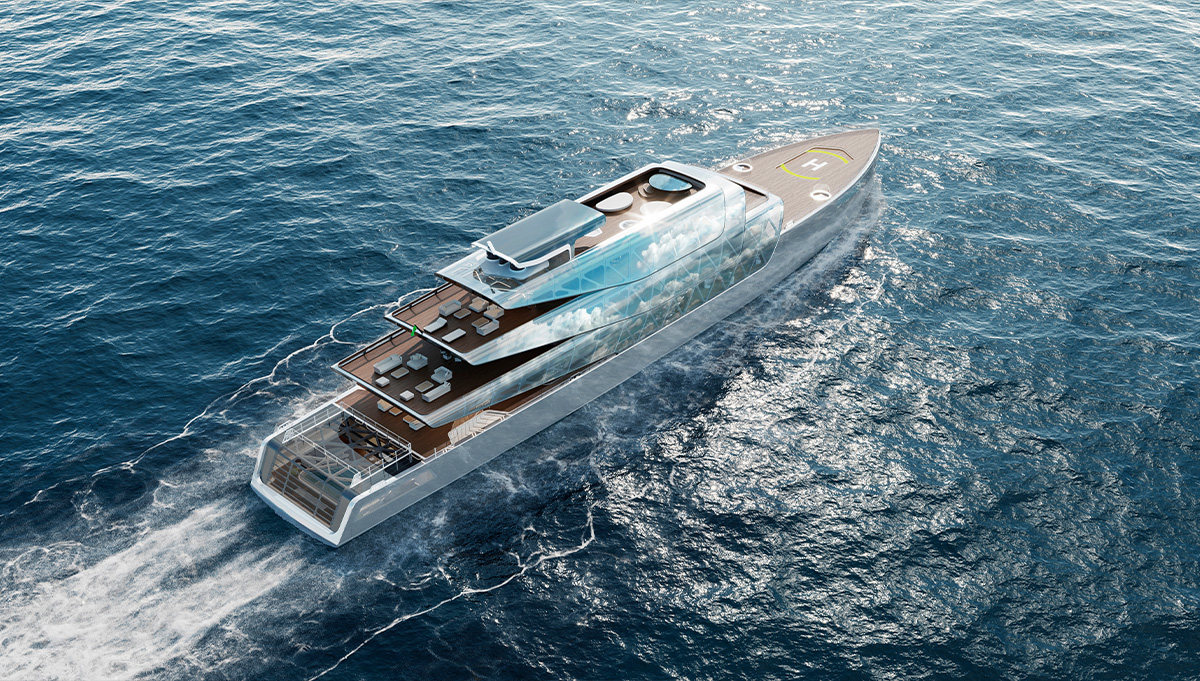
Pegasus

Pegasus
It mirrors – or perhaps is a logical extension of – an idea for having living plant walls or enclosed greenhouses that have appeared on other designs and new-builds, like the enclosed garden on the 72-metre VSY superyacht Stella Maris, the vertical garden in the saloon on board Baglietto’s 40-metre yacht Panam, or the greenhouse on Feadship’s Escape concept. There are even specialist designers in the field, such as engineer and landscape-architect Axel Massmann, whose company Yacht-Green has completed or has underway greening and garden projects on close to 10 superyachts.
For sure, advancement means being sustainable, but it also includes more conscious use of other resources – after all, how much more local can you get than your own vegetable garden. “Now is the time for courageous leaps toward our collective sustainable future,” Forakis asserts. “Pegasus is a bold but achievable vision for the near future of the superyacht industry, where man and machine live in harmony with nature rather than competing with or compromising it.”
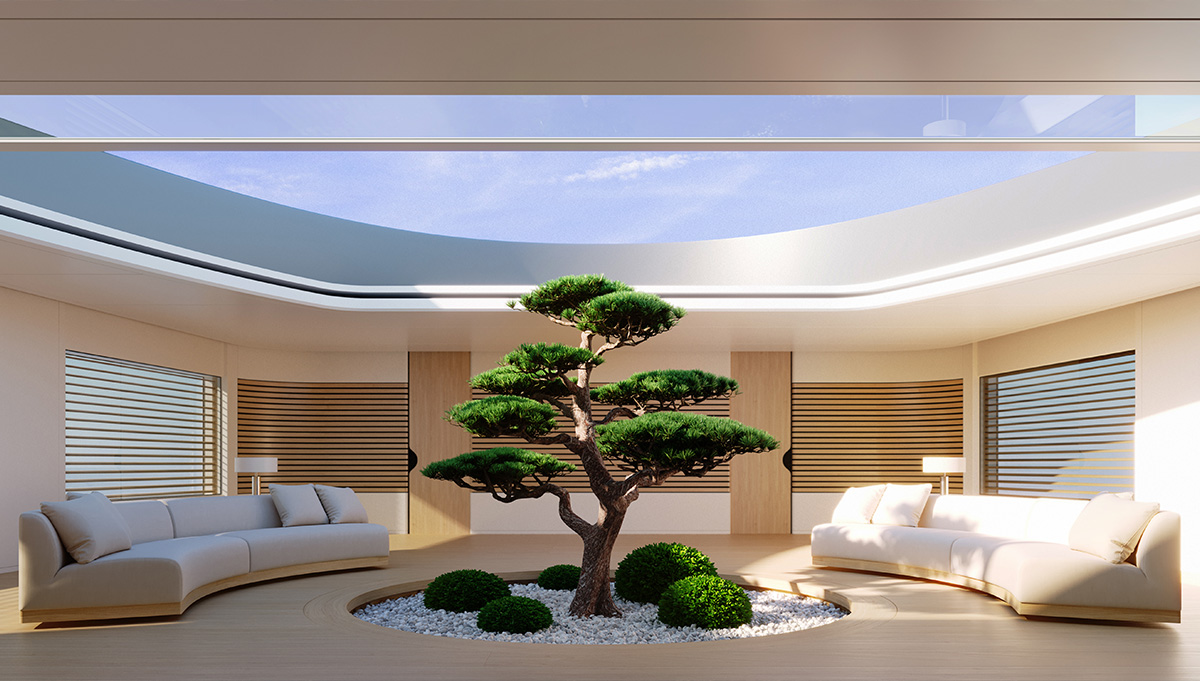
Interior of Escape

Interior of Escape
It stands as an example of how having an external view can lead to creativity in new directions, which in turn can suggest new ideas or solutions or, at the very least, an alternative take on and extension of existing features. “At joseph forakis … design, our experience designing across many industries gives us unique exposure and perspective to various new technology and innovation verticals,” Forakis says. “The aimed added value here is the design vision that guides the skilled selection, research, development, and transfer of several critical technologies from disparate industries that generally don’t communicate with each other to create a unique composition that helps fulfil that vision as a harmonious, original design.”
There is perhaps a little more to it as well – it’s the vision of creators, thinkers and inventors that makes the big leaps, and it’s those leaps that open up new opportunities and new ways of thinking for the rest of us. Projects like Pegasus, Escape and many other concepts are not just about the design itself – nor even whether it’s entirely feasible – but rather to inspire, be it sustainable technologies or a new and more mindful approach to enjoying a superyacht. It’s these ideas that draw superyacht owners to invest in something new, and it’s that investment that delivers change, not just in superyachting but potentially in all our lives. It is rather, as others have observed, perhaps a case of invention being the mother of necessity.

